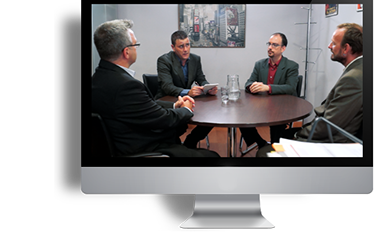

Building
Mutual Trust
Dissemination has started
Interactive
Video Clips
Available now
You can access the videos from the top menu.
The BMT 2 Project
Spoken language interpreters are found in police stations and court rooms throughout the EU. As more and more people move around Europe, crossing borders to look for work or to relocate to another country, the call for language assistance in law enforcement and judicial activities grows.
Directive 2010/64/EU on the right to translation and interpretation in criminal proceedings calls on member states to “request those responsible for the training of judges, prosecutors and judicial staff involved in criminal proceedings to pay special attention to the particularities of communicating with the assistance of an interpreter so as to ensure efficient and effective communication.” (Directive 2010/64/EU Of The European Parliament And Of The Council Of 20 October 2010 on the right to interpretation and translation in criminal proceedings (Brussels).
Building Mutual Trust 2 addresses this call by offering audio-visual training scenarios demonstrating best practices when working with suspects, defendants and witnesses through a spoken language interpreter.
The training scenarios are:
- designed specifically for law enforcement and judicial professionals
- user friendly for the non-linguist
- suitable for use by trainers or as self-study materials
- available free of charge as streaming video clips on the internet.
Each scenario illustrates the use in context of a different interpreting skill used by legal interpreters. The learning points accompanying each video will help to you consider how to adapt your professional practice to working through an interpreter.
Using the videos
The videos tell the story of Maria Novak. Maria is a Polish speaker who finds herself facing police and court proceedings in Spain after an incident in a local market. It soon becomes clear, however, that there is more to Maria’s story than meets the eye.
You can follow Maria’s story by watching all the videos in sequence. Alternatively, you can view each video individually and view them in any order. We recommend, however, that you watch Video one, The Lawyers, first, as it lays the foundations for the learning points that follow in the later sequences.
You will find an introduction to contents and learning points at the beginning of each video clip. There are also links to further documents and background materials.
The videos are available in two formats: HTML5 (for modern browsers and tablets) and Adobe Flash (for older browsers, specially Microsoft Internet Explorer 6 and 7.) If you have problems watching the HTML5 versions, you can switch to the Flash versions.
In these videos you will meet the following characters:
- Thomas and Robert, two lawyers
- Maria Novak, a Polish girl arrested for theft
- Inspector Gómez, the police officer who interviews Maria
- The Clerk of Court and the Public Prosecutor in the court where Maria’s case is heard
- Inspector García, the police officer in charge of investigating Bo, a suspected people smuggler
- Bo, a Polish man arrested on suspicion of people smuggling
- Four legal interpreters
The videos are:
Video 1 - Total time: 04:57
Chapter one, Speaking the same language; Chapter two, Introduction of Inspector García.
Video 2 - Total time: 10:27
Chapter three, A real nightmare; Chapter four, The arrest: a suspect who doesn’t speak and engaging an interpreter.
Video 3 - Total time: 23:49
Chapter five, Finding and interpreter; Chapter six, The interrogation: interviewing through an interpreter, dialogue interpreting.
Video 4 - Total time: 14:36
Chapter seven, The Court room: court proceedings through an interpreter, examination and whispered simultaneous interpreting.
Video 5 - Total time: 09:42
Chapter eight, Video-mediated interpreting
The three languages represented in the videos are English, Spanish and Polish. Subtitles are available in English, Spanish, Polish and Romanian. More subtitled versions may be available later.